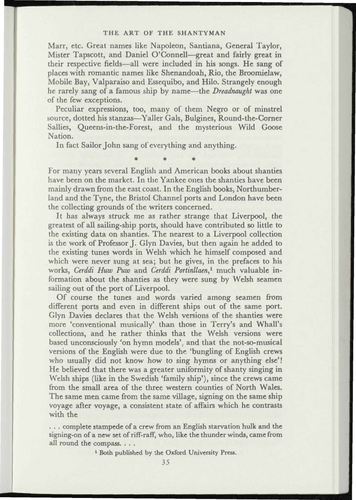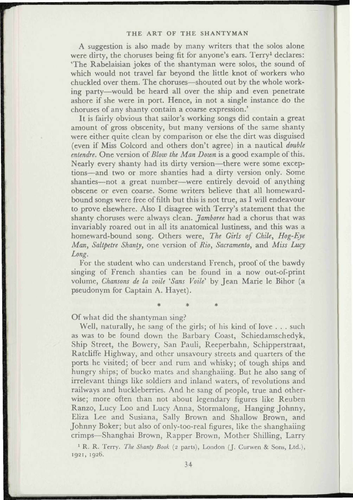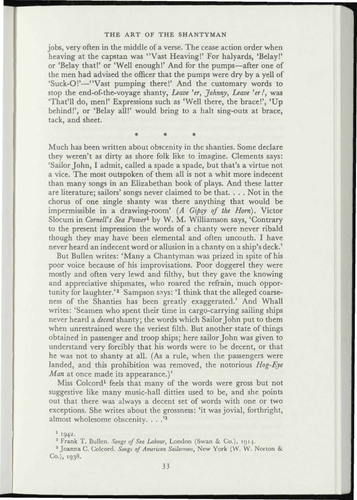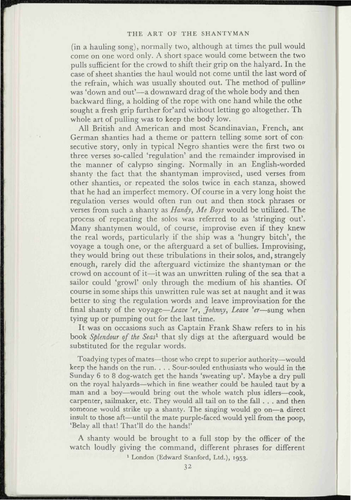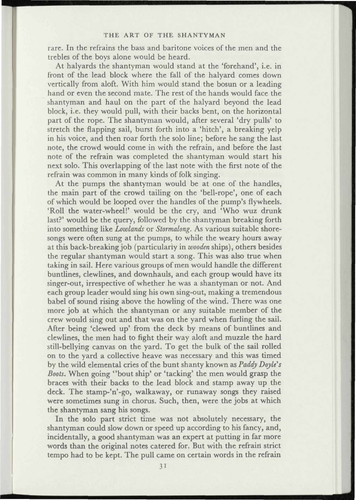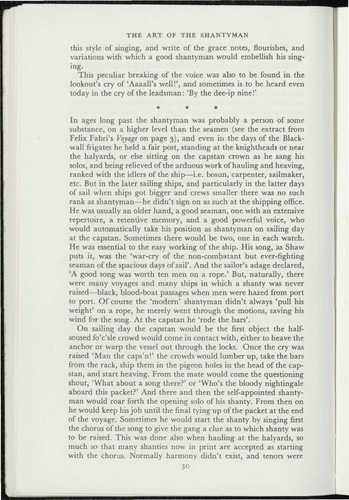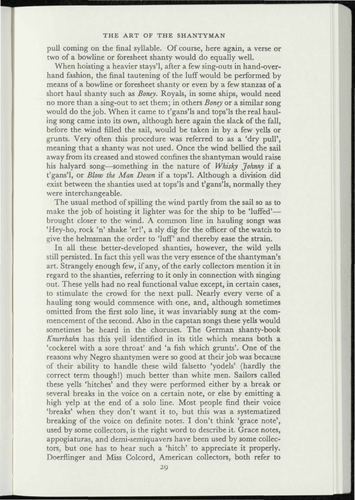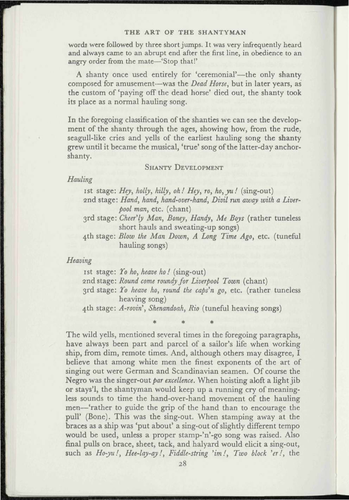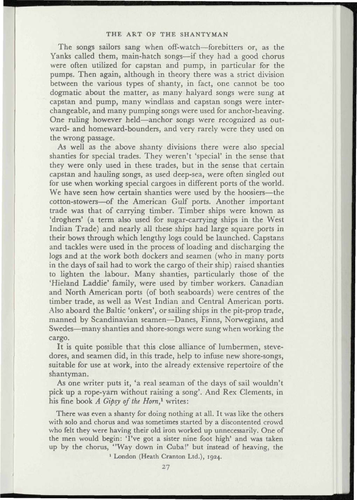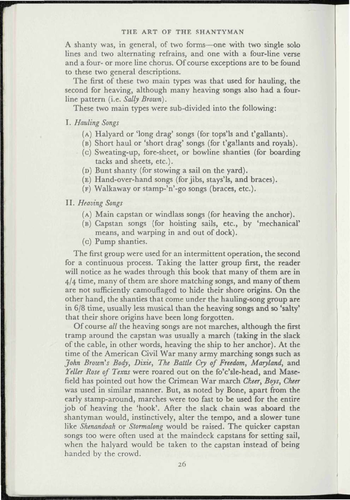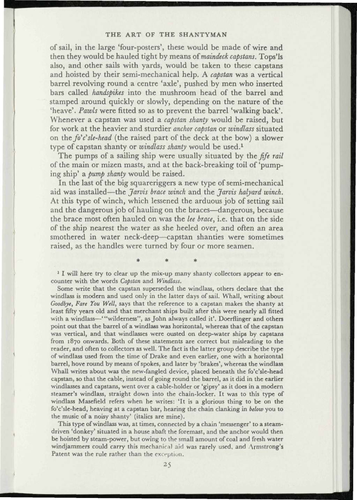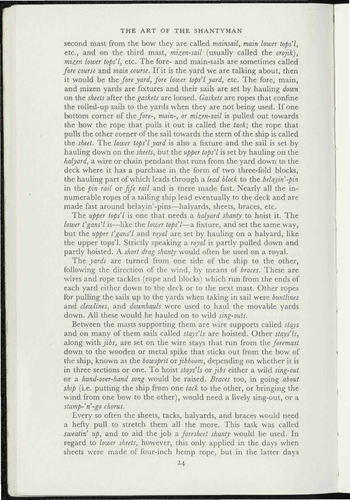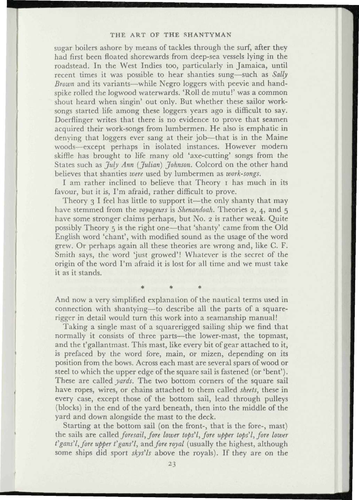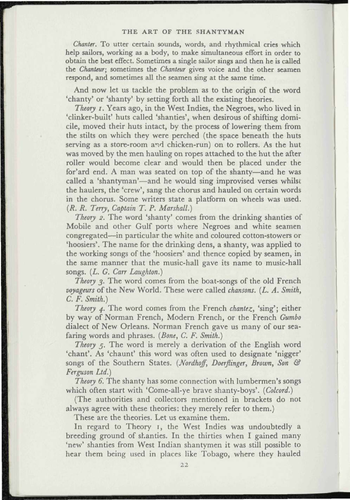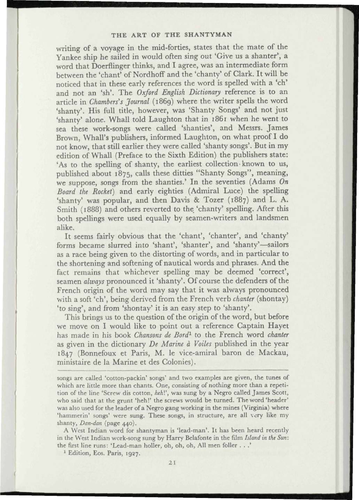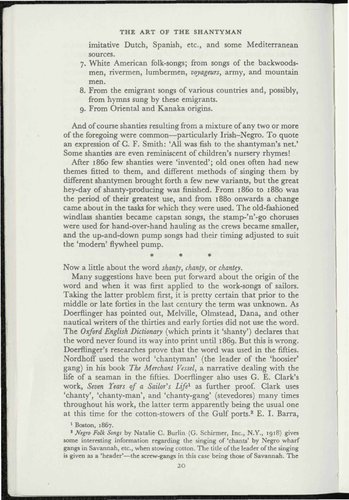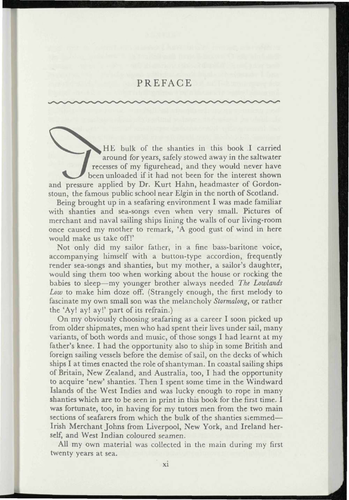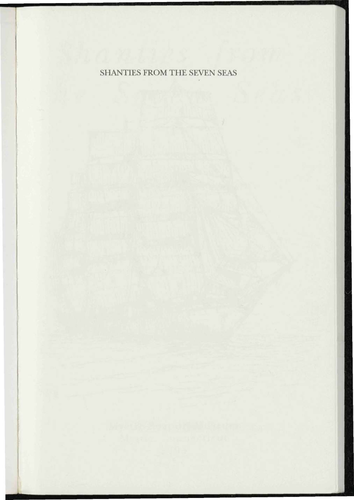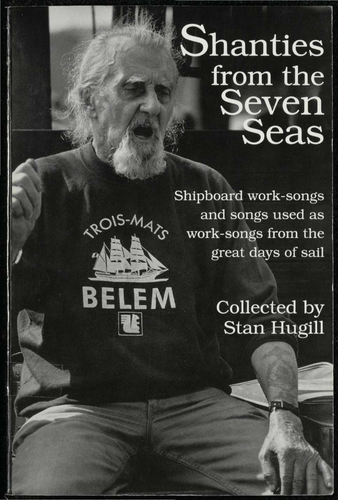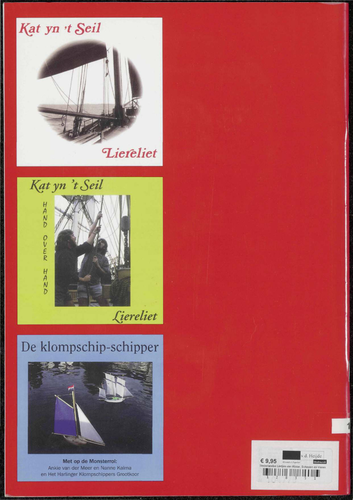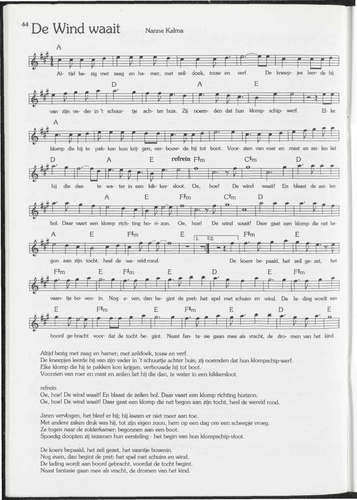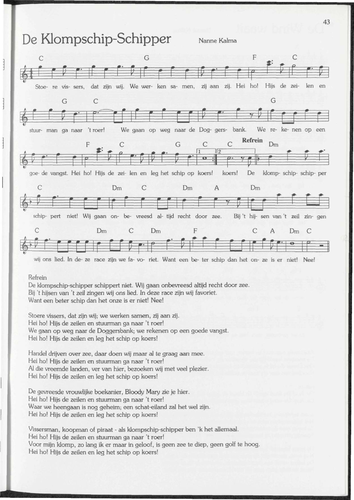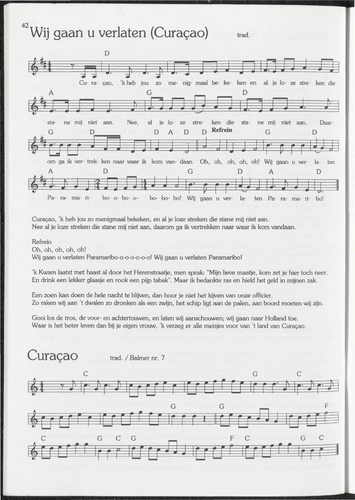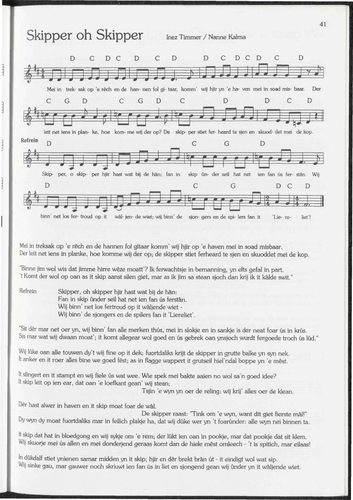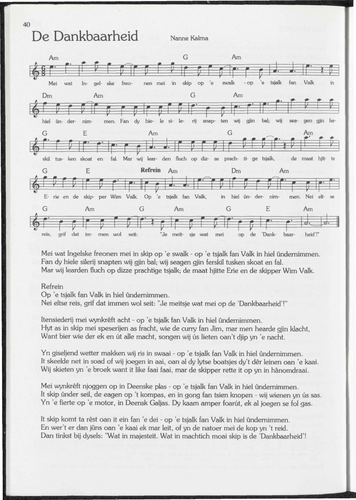8.510 afbeeldingen
sorteren op:
049 Shanties From The Seven Seas
Organisatie: Shanty Nederland
laatste wijziging 07-02-2023
1 gedigitaliseerd
049 Shanties From The Seven Seas
Organisatie: Shanty Nederland
laatste wijziging 07-02-2023
1 gedigitaliseerd
049 Shanties From The Seven Seas
Organisatie: Shanty Nederland
laatste wijziging 07-02-2023
1 gedigitaliseerd
049 Shanties From The Seven Seas
Organisatie: Shanty Nederland
laatste wijziging 07-02-2023
1 gedigitaliseerd
049 Shanties From The Seven Seas
Organisatie: Shanty Nederland
laatste wijziging 07-02-2023
1 gedigitaliseerd
049 Shanties From The Seven Seas
Organisatie: Shanty Nederland
laatste wijziging 07-02-2023
1 gedigitaliseerd
049 Shanties From The Seven Seas
Organisatie: Shanty Nederland
laatste wijziging 07-02-2023
1 gedigitaliseerd
049 Shanties From The Seven Seas

Shanties From The Seven Seas,
Titel:
Shanties From The Seven Seas
Naam uitgever:
MYSTIC SEAPORT MUSEUM
Jaar van uitgave:
First Published 1961
Taal:
Engels
Aantal pagina's:
430
Plaats van uitgave:
Connecticut
Auteur:
Collected by Stan Hugill
Organisatie: Shanty Nederland
laatste wijziging 07-02-2023
1 gedigitaliseerd
049 Shanties From The Seven Seas
Organisatie: Shanty Nederland
laatste wijziging 07-02-2023
1 gedigitaliseerd
049 Shanties From The Seven Seas
Organisatie: Shanty Nederland
laatste wijziging 07-02-2023
1 gedigitaliseerd
049 Shanties From The Seven Seas
Organisatie: Shanty Nederland
laatste wijziging 07-02-2023
1 gedigitaliseerd
049 Shanties From The Seven Seas
Organisatie: Shanty Nederland
laatste wijziging 07-02-2023
1 gedigitaliseerd
049 Shanties From The Seven Seas
Organisatie: Shanty Nederland
laatste wijziging 07-02-2023
1 gedigitaliseerd
049 Shanties From The Seven Seas
Organisatie: Shanty Nederland
laatste wijziging 07-02-2023
1 gedigitaliseerd
049 Shanties From The Seven Seas
Organisatie: Shanty Nederland
laatste wijziging 07-02-2023
1 gedigitaliseerd
049 Shanties From The Seven Seas
Organisatie: Shanty Nederland
laatste wijziging 07-02-2023
1 gedigitaliseerd
049 Shanties From The Seven Seas

Shanties From The Seven Seas,
Titel:
Shanties From The Seven Seas
Naam uitgever:
MYSTIC SEAPORT MUSEUM
Jaar van uitgave:
First Published 1961
Taal:
Engels
Aantal pagina's:
430
Plaats van uitgave:
Connecticut
Auteur:
Collected by Stan Hugill
Organisatie: Shanty Nederland
laatste wijziging 07-02-2023
1 gedigitaliseerd
049 Shanties From The Seven Seas

Shanties From The Seven Seas,
Titel:
Shanties From The Seven Seas
Naam uitgever:
MYSTIC SEAPORT MUSEUM
Jaar van uitgave:
First Published 1961
Taal:
Engels
Aantal pagina's:
430
Plaats van uitgave:
Connecticut
Auteur:
Collected by Stan Hugill
Voorbeeld : Klik op de tekst voor meer
Organisatie: Shanty Nederland
laatste wijziging 07-02-2023
1 gedigitaliseerd
049 Shanties From The Seven Seas

Shanties From The Seven Seas,
Titel:
Shanties From The Seven Seas
Naam uitgever:
MYSTIC SEAPORT MUSEUM
Jaar van uitgave:
First Published 1961
Taal:
Engels
Aantal pagina's:
430
Plaats van uitgave:
Connecticut
Auteur:
Collected by Stan Hugill
Voorbeeld : Klik op de tekst voor meer
Organisatie: Shanty Nederland
laatste wijziging 07-02-2023
1 gedigitaliseerd
056 Nederlandse Liedjes Van Water Schepen En Varen

Nederlandse Liedjes Van Water Schepen En Varen,
Titel:
Nederlandse Liedjes Van Water Schepen En Varen
Naam uitgever:
Windrose Music
Jaar van uitgave:
2004
Omschrijving:
Verantwoording
Aantal pagina's:
48
Paginanummer:
48
Taal:
Nederlands
Plaats van uitgave:
Drachten NL.
Auteur:
Ankie Van Der Meer & Nanne Kalma, Liereliet En Kat Yn 't Seil
Voorbeeld : Klik op de tekst voor meer
Organisatie: Shanty Nederland
laatste wijziging 07-02-2023
1 gedigitaliseerd
056 Nederlandse Liedjes Van Water Schepen En Varen

Nederlandse Liedjes Van Water Schepen En Varen, De Wind Waait
Titel:
Nederlandse Liedjes Van Water Schepen En Varen
Ondertitel:
De Wind Waait
Naam uitgever:
Windrose Music
Jaar van uitgave:
2004
Omschrijving:
Bladmuziek en Liedtekst
Taal:
Nederlands
Aantal pagina's:
48
Paginanummer:
46
Plaats van uitgave:
Drachten NL.
Auteur:
Ankie Van Der Meer & Nanne Kalma, Liereliet En Kat Yn 't Seil
Organisatie: Shanty Nederland
laatste wijziging 07-02-2023
1 gedigitaliseerd
056 Nederlandse Liedjes Van Water Schepen En Varen

Nederlandse Liedjes Van Water Schepen En Varen, De Klompschip-Schipper
Titel:
Nederlandse Liedjes Van Water Schepen En Varen
Ondertitel:
De Klompschip-Schipper
Naam uitgever:
Windrose Music
Jaar van uitgave:
2004
Omschrijving:
Bladmuziek en Liedtekst
Taal:
Nederlands
Aantal pagina's:
48
Paginanummer:
45
Plaats van uitgave:
Drachten NL.
Auteur:
Ankie Van Der Meer & Nanne Kalma, Liereliet En Kat Yn 't Seil
Organisatie: Shanty Nederland
laatste wijziging 07-02-2023
1 gedigitaliseerd
056 Nederlandse Liedjes Van Water Schepen En Varen

Nederlandse Liedjes Van Water Schepen En Varen, Wij Gaan U Verlaten (Curacao)
Titel:
Nederlandse Liedjes Van Water Schepen En Varen
Ondertitel:
Wij Gaan U Verlaten (Curacao)
Naam uitgever:
Windrose Music
Jaar van uitgave:
2004
Omschrijving:
Bladmuziek en Liedtekst
Taal:
Nederlands
Aantal pagina's:
48
Paginanummer:
44
Plaats van uitgave:
Drachten NL.
Auteur:
Ankie Van Der Meer & Nanne Kalma, Liereliet En Kat Yn 't Seil
Organisatie: Shanty Nederland
laatste wijziging 07-02-2023
1 gedigitaliseerd
056 Nederlandse Liedjes Van Water Schepen En Varen

Nederlandse Liedjes Van Water Schepen En Varen, Skipper Oh Skipper
Titel:
Nederlandse Liedjes Van Water Schepen En Varen
Ondertitel:
Skipper Oh Skipper
Naam uitgever:
Windrose Music
Jaar van uitgave:
2004
Omschrijving:
Bladmuziek en Liedtekst
Taal:
Fries
Aantal pagina's:
48
Paginanummer:
43
Plaats van uitgave:
Drachten NL.
Auteur:
Ankie Van Der Meer & Nanne Kalma, Liereliet En Kat Yn 't Seil
Organisatie: Shanty Nederland
laatste wijziging 07-02-2023
1 gedigitaliseerd
056 Nederlandse Liedjes Van Water Schepen En Varen

Nederlandse Liedjes Van Water Schepen En Varen, De Dankbaarheid
Titel:
Nederlandse Liedjes Van Water Schepen En Varen
Ondertitel:
De Dankbaarheid
Naam uitgever:
Windrose Music
Jaar van uitgave:
2004
Omschrijving:
Bladmuziek en Liedtekst
Taal:
Fries
Aantal pagina's:
48
Paginanummer:
42
Plaats van uitgave:
Drachten NL.
Auteur:
Ankie Van Der Meer & Nanne Kalma, Liereliet En Kat Yn 't Seil
Organisatie: Shanty Nederland
laatste wijziging 07-02-2023
1 gedigitaliseerd

 Mijn Studiezaal (inloggen)
Mijn Studiezaal (inloggen)